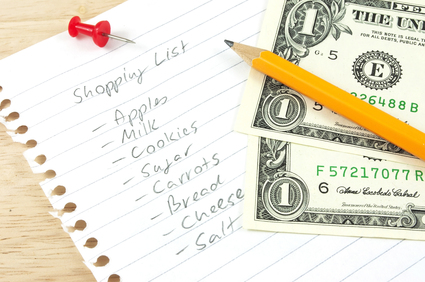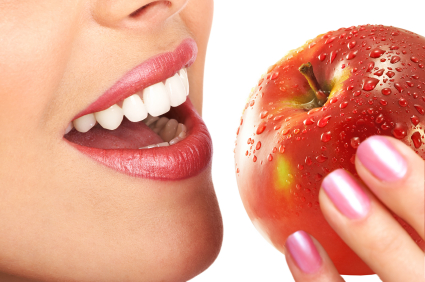
People often ask me, Cat—how can you eat healthy if you are on a budget?
Yes, everyone—including me—is looking at ways to cut out unnecessary expenses, and the grocery budget is definitely a target.
No, we do not all need to head to Wal-Mart for our groceries or start eating everything out of cans! Absolutely not.
There actually is a way to shop smart, and still get healthy and organic foods, on a budget.
But yes it does require changing your shopping habits and planning a bit before shopping.
But really, it is very worthwhile! Next to a mortgage, food is the most expensive monthly expense, but the food you eat is a huge investment in your family’s long term health and that is like money in the bank.
The first thing to do is to cut out all the packaged, processed junk food if you are getting any. Do you get chips? Cookies? Crackers? Snack bars? Even…(yikes!) Twinkies?
These things are EXPENSIVE and they really add up fast!
What about so-called ‘diet’ foods like artificially sweetened yogurt? Sodas? Prepackaged frozen convenience meals? Again, EXPENSIVE.
All of those things are extremely unhealthy and fattening and I go into great detail about these foods in my book The Fat Burning Kitchen .
So what do you currently spend on food?
Start by making a list of all those foods that you purchase that are full of sugar, artificial ingredients, bad fats and chemicals. Add up the costs.
And don’t forget to add in how much you spend on fast food, and the fancy sugar and (bad) fat filled coffee drinks? If you do the math, you will most likely find that you are spending a lot of money on foods that do nothing but add to your waistline.
So take a close look at all those foods that are really ‘non-foods’ and cross them off the list.
By far the most expensive foods you can buy are the processed, packaged foods that are usually full of ingredients you don’t recognize, unhealthy fattening fats, chemicals, preservatives and more.
Just think a bag of chips is $3.99, and box of cookies is $3.49, soda is a few dollars and on and on.
Ok, so you and your body and your waistline will be WAAAY better off without any of those foods I mentioned above. What to eat then?
Well I’m not saying you can’t snack. Heck I do–I couldn’t live without snacks! But if you are going to eat a snack, be sure it’s good for your body. So instead of a bag of chips, get some raw almonds, pumpkin seeds, walnuts, pecans, pistachios, or other RAW nuts (try to avoid those kind with the added oils).
Try some new and different ones–ever try macadamia nuts? Those ROCK! Yes, they are high in calories, but we aren’t counting these kind of GOOD calories. That’s good fat your body needs and your appetite will adjust since you will feel full or satisfied longer.
Get some organic apples, organic grapes, organic pears, or organic berries and enjoy some fruit along with a handful of nuts. Or slice up that delicious organic apple and dip it in natural peanut butter or nut butter. Raw cheese is also delicious next to a few pieces of fruit. Yum! REAL food. Good for you.
Or how about cutting up some fresh veggies and dipping them into some hummus.
Great desserts can be made from frozen fruit, a sprinkle of nuts and a dash of cinnamon instead of pies and cakes. Go for a few squares of dark chocolate if you need your chocolate fix.
Avoid the conventional grocery stores if at all possible. Generally speaking, the organic or natural foods section of a regular grocery store is way overpriced.
And since organic fresh fruits and vegetables don’t get purchased as often at regular grocery stores, they generally are not as fresh as they are at an organic or natural foods store.
Do you know about the ‘Dirty Dozen’? These are the fruits and veggies you should avoid UNLESS you can get them organic. They are the ones with the most harmful chemicals and pesticides on them. Here are the ‘Dirty Dozen’:
- Celery
- Peaches
- Strawberries
- Apples
- Domestic blueberries
- Nectarines
- Sweet bell peppers
- Spinach, kale and collard greens
- Cherries
- Potatoes
- Imported grapes
- Lettuce-all typesAnd these veggies and fruits are generally not too bad if you buy them conventionally grown:
- Onions
- Avocados
- Sweet corn
- Pineapples
- Mango
- Sweet peas
- Asparagus
- Kiwi fruit
- Cabbage
- Eggplant
- Cantaloupe
- Watermelon
- Grapefruit
- Sweet potatoes
- Sweet onionsOne more comment about organic vs. conventionally grown though. Besides the fact that you are avoiding pesticides and herbicides when you eat organically grown, you should know that organic fruits and vegetables have been scientifically proven to contain significantly higher levels of nutrients due to the soil they are grown in. So you are getting more ‘bang for your buck’ with organics!Besides conventional grocery stores, there are natural and organic foods in health food stores, co-ops, farmers’ markets, community-supported agriculture programs, or online.And there are some great chain healthy food stores like Trader Joe’s that offer lots of organic or natural foods at way lower prices than a regular grocery store. I also find these stores have a wider variety of choices as well.Make sure to have a game plan before you hit the store and have an idea of your menus for the week. Make a list and stick to it. This way you are purchasing only what you will be using and avoiding those impulse purchases.
Watch for sale items and buy on sale!
Buy in bulk if you use it frequently–it’s generally much less money and you save on all the packaging too. Try splitting bulk packages with friends or family.
I like to purchase my meats from an online company generally. While it seems more expensive than at the grocery store, you are getting grass-fed, all natural, no hormones, no antibiotics, pure fat burning protein, full of healthy omega 3 fats, so more nutrition and less waste. There are lots of places that are starting to carry this kind of meat, but my favorite is U.S. Wellness Meats.
There is really NO comparison between grass fed and conventionally raised meats–and conventionally raised meats are full of fat storing, inflammatory omega 6 fats as well. I go for the less expensive cuts of meat like hamburger instead of steak, and dark meat chicken (has more nutrients too!) instead of the boneless, skinless breasts.
Cooking from scratch is always the least expensive option. One way to save time is to cook up a batch of hamburger meat, or other ground meat, and freeze some of it for later use. That makes it quicker and easier to use when needed.
Recipes such as chili, taco meat, stews, spaghetti sauce, and virtually any of your favorite recipes are great to freeze and use at a later time.
Remember, good nutrition is major investment in your health in the long run. A healthy diet means you will avoid being sick in the near future and avoid expensive health issues down the road. You ARE what you eat and the fuel is of utmost importance!
 Catherine (Cat) Ebeling RN BSN, is a back to basics diet and nutrition specialist. In addition to her advanced degree in nursing from a major medical school, she has spent the last 30 years intensely studying diet, health and nutrition. She also has a book titled “The Fat Burning Kitchen, Your 24 Hour Diet Transformation” that has sold over 60,000 copies worldwide, and has helped thousands of people transform their lives, lose weight and improve their health.
Catherine (Cat) Ebeling RN BSN, is a back to basics diet and nutrition specialist. In addition to her advanced degree in nursing from a major medical school, she has spent the last 30 years intensely studying diet, health and nutrition. She also has a book titled “The Fat Burning Kitchen, Your 24 Hour Diet Transformation” that has sold over 60,000 copies worldwide, and has helped thousands of people transform their lives, lose weight and improve their health. 


